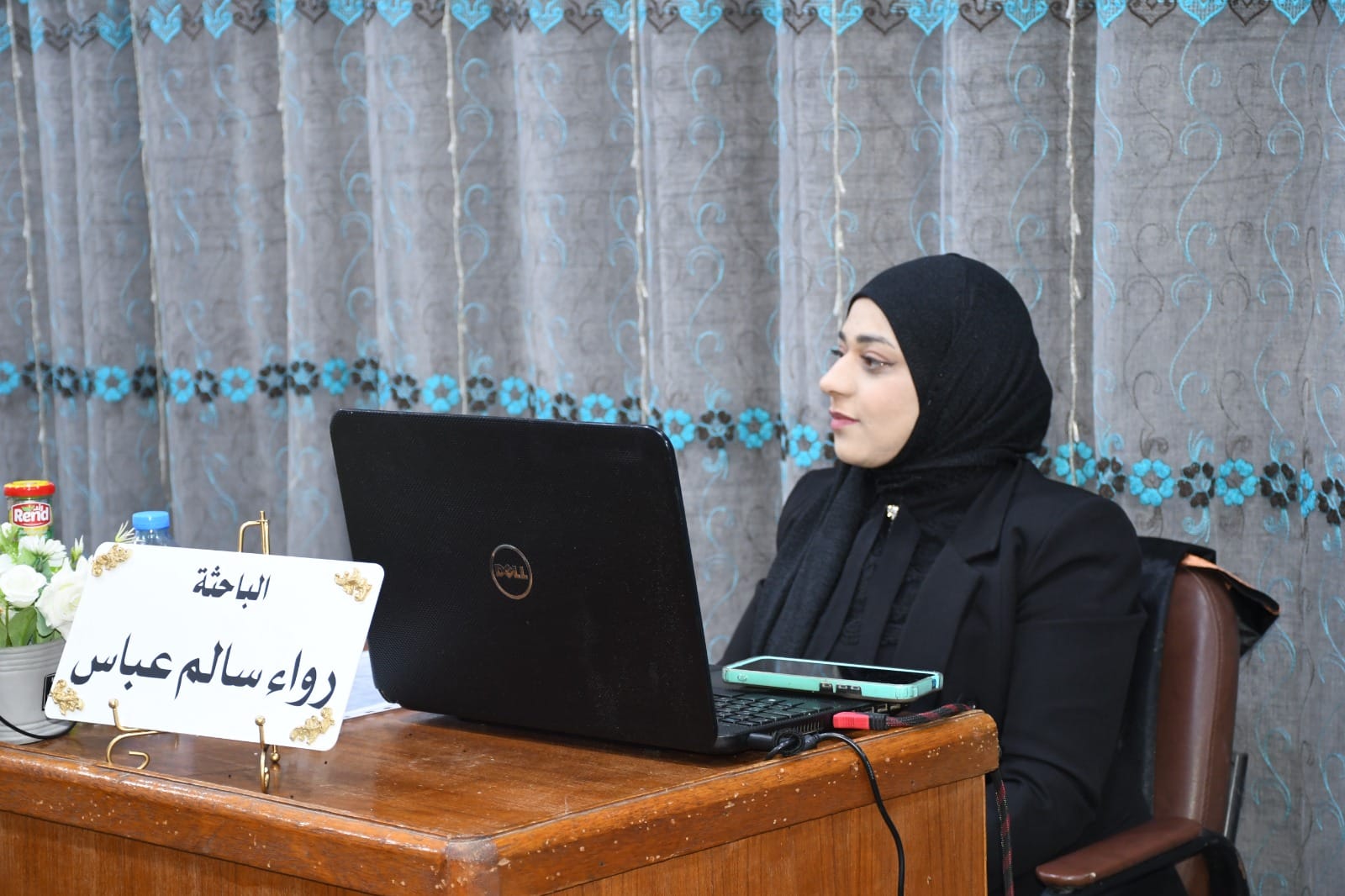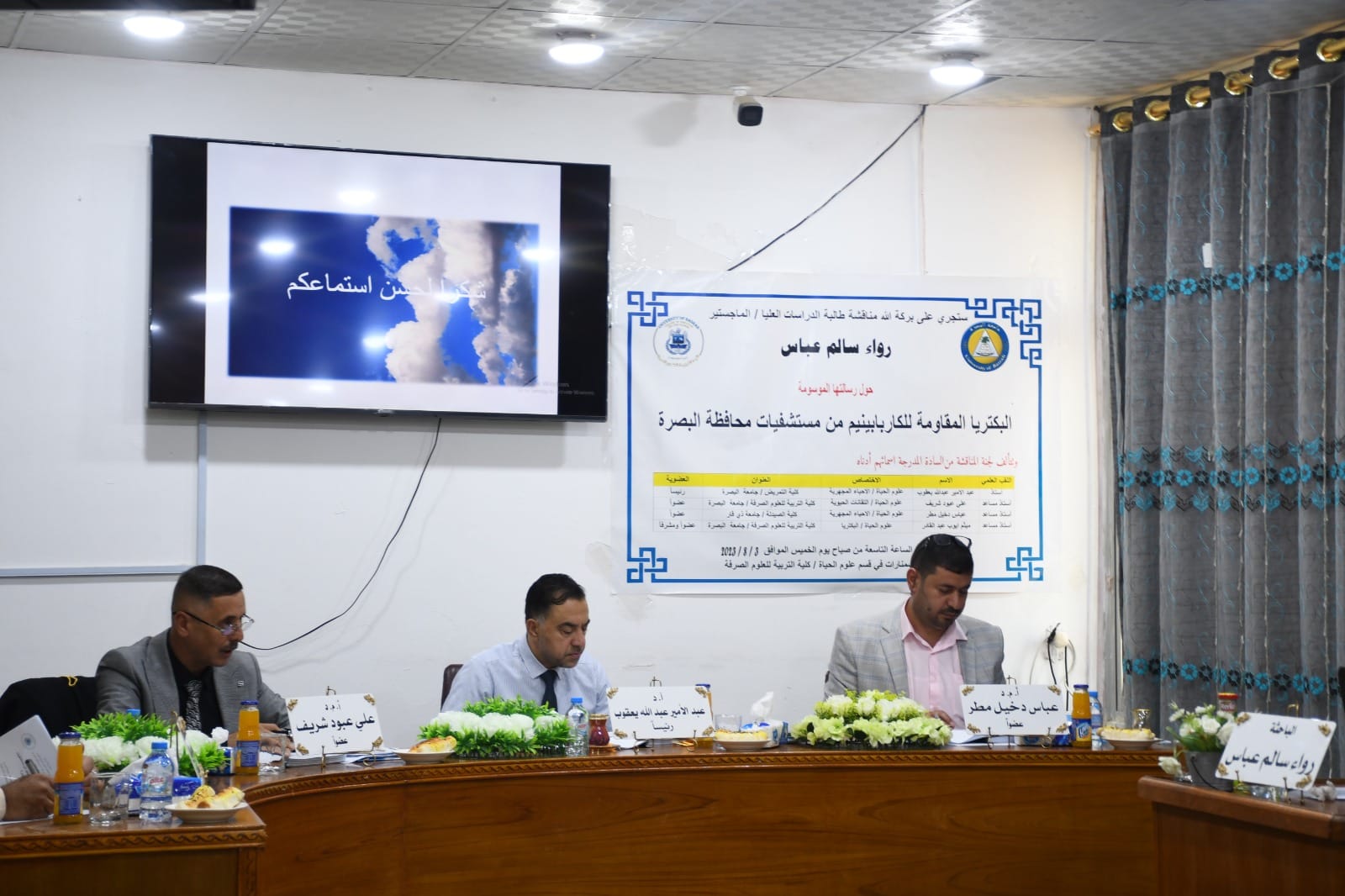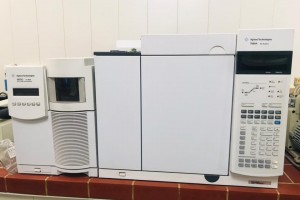
The College of Education for Pure Sciences, Department of Life Sciences, University of Basrah, discussed a master's thesis on carbapenem-resistant bacteria from hospitals in Basrah Governorate.
The thesis presented by the researcher (Rawaa Salem Abbas) included
Several studies have reported that the hospital environment is a reservoir of carbapenem-resistant bacteria that contaminate and spread these bacteria to inpatients. Infection with this bacteria is associated with high rates of mortality and morbidity. (200) swab samples were collected from different locations, including halls and units, from four teaching hospitals in the city of Basrah - Iraq, which included (Al-Fayhaa Teaching Hospital, Basrah Teaching Hospital, Al-Mawani Teaching Hospital, and Al-Sadr Teaching Hospital, during the period between 11/8/2021 AD - 20/2020). 6/2022 A.D. The samples were cultured on MacConkey agar medium in order to obtain Gram-negative bacterial colonies, then they were cultured on a chromogenic medium (HiCrom CarbaResist Agar (M2099), which is used to detect and screen for carbapenem-resistant bacteria. Bacterial isolates were identified directly through color differentiation on this Then it was diagnosed by traditional methods, based on phenotypic and microscopic characteristics, and it was also diagnosed by the Vitek 2Compact device, and then the bacterial isolates were diagnosed genetically, depending on the diagnostic gene SrDNA16 using PCR technology and determining the presence of resistance genes OXA-48 and KPC gene. The results of our current study showed (189) isolates from (200) swab samples producing carbapenemase enzymes, were (61) isolates that belong to Klebsiella pneumonaie, (Escherichia coli (37), Pseudomonas aeruginosa (19), Acinetobacter baumannii (4) and (68) isolates of bacteria other undiagnosed. The results also showed that the most polluted environmental sources are the bed 41 (21.69%), the floor 34 (17.98%), and the pillow 33 (17.46%), and less for other sites. An antibiotic sensitivity test (Disc diffusion method) was performed for the isolates against four carbapenem antibiotics: Imipenem, Meropenem, Etrapenem and Doripenem to determine the level of sensitivity. The results were obtained as follows: (30) isolates out of (189) showed Carbapenemase-producing bacteria that are resistant to most carbapenem groups. The carbapenem-resistant isolates identified by the Vitek 2 Compact device included (11) isolates distributed as follows ((6) isolates of Pseudomonas aeruginosa, (3) Acinetobacter baumannii, (1) isolate Sphingomonas paucimobilis, (1) isolate Pseudomonas putida. The results showed antibiotic sensitivity Sensetivity Test using the Vitek-2 system had high antibiotic resistance, so 11 (100%) isolates were resistant to each of the antibiotics Imipenem, Ciprofloxacin and Ceftazidime, while 1 (9.09%) wasolates were resistant to the antibiotic Colistin.Antibiotic sensitivity tests varied with other antibiotics. The production of MBLs metalloenzymes was investigated. (4) isolates out of 6 species of Pseudomonas aeruginosa were producing these enzymes. As for the results of the molecular diagnosis, all isolates contained the srDNA16 gene by 100%. As for the OXA-48 and KPC resistance genes, they were recorded The current study showed the presence of the KPC gene in all seven isolates with a rate of 100%, while the presence of the OXA-48 gene in 4 isolates with a rate of (57.14%).









